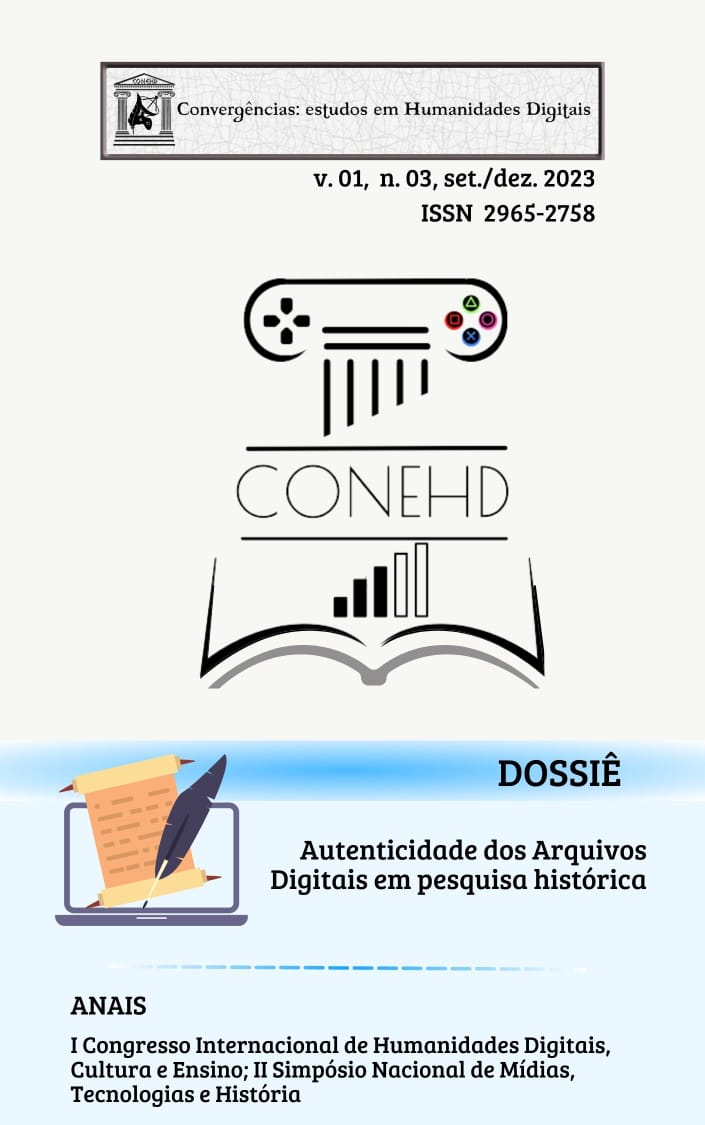Digital in the design of safe “places”
case study of a plataform to support victims in cases of bullying in the school environment
DOI:
10.59616/cehd.v1i03.320Keywords:
Bullying, Digital Communication, Digital DesignAbstract
In the current context of globalization and constant evolution of the role of the internet in the relationships between parties, the practice of cyberbullying has increased, gaining predominance in society and in school culture. The present investigation studies the development of the Nook digital platform, which proposes to help possible victims in the school environment, building a safe atmosphere for victims and whistleblowers, and also providing psychological support by professionals. The project was developed within the scope of research and according to methodologies of Design Thinking, UX / UI Design, UCD and SUS adapted from John Brooke. Thus, the digital can be used by all educational actors in order to allow accessibility and speed through efficient platforms designed to combat the problem.
References
APAV. Apoio à vítima, Folha Informativa. 2021. Disponível em: https://apav.pt/apav_v3/images/pdf/FI_Bullying_2020.pdf. Acesso em: 15 de outubro de 2023.
BROOK, J. SUS: A quick and dirty usability scale. 1995. Disponível em: https://www.researchgate.net/publication/228593520_SUS_A_quick_and_dirty_usability_scale. Acesso em: 15 de outubro de 2023.
CASTELLS, M. A Galáxia da Internet – Reflexões sobre a internet, os negócios e a sociedade. Rio de Janeiro: Zahar, 2003.
GARRETT, J. The Elements of User Experience: User-Centered Design for the Web and Beyond. Second Edition. ISBN 13: 978-0-321-68368-7, 2011.
GAUSEPOHL, K., SMITH-JACKSON, T., KLEINER, B., ARTHUR, J. A conceptual model for the role of storytelling in design: leveraging narrative inquiry in user-centered design (UCD). doi: 10.1007/s12553-015-0123-1.
GIBBONS, S., e NORMAN NIELSEN GROUP. Design Thinking 101. 2016. Disponível em: https://www.nngroup.com/articles/design-thinking/. Acesso em: 15 de outubro de 2023.
GOMES, M., DIAS, M. Bullying no contexto escolar: entender, intervir e prevenir. (Coimbra). ISSN: 2386-7418, 2017, Vol. Extr., No. 05. 2017.
MOREIRA, J., SHELEMMER, E. Por um novo conceito e paradigma de educação digital online. Revista UFG, Vol. 20, 63438, São Paulo. ISSN: 2179-2925. 2020.
NIELSEN. Norman Nielsen Group – Ten Usability heuristics. Disponível em: https://www.nngroup.com/articles/ten-usability-heuristics/. Acesso em: 15 de outubro de 2023.
NIELSEN. Norman Nielsen Group – Why you only need to test with 5 users. Disponível em: https://www.nngroup.com/articles/why-you-onlyneed-to-test-with-5-users/. Acesso em: 15 de outubro de 2023.
PÚBLICO. Combater o bullying, promover a saúde psicológica. 2020. Disponível em: https://www.publico.pt/2020/10/20/p3/cronica/combater-bullyingpromover-saude-psicologica-1935807. Acesso em: 15 de outubro de 2023.
PEREIRA, S. Dissertação de Mestrado em Supervisão Pedagógica e Formação de Formadores: Cyberbullying: o pensamento dos professores, Coimbra, 2011.
PRODANOV, C. C. Metodologia do trabalho científico: métodos e técnicas da pesquisa e do trabalho acadêmico. 2. ed., Novo Hamburgo: Feevale, 2013.
SANTOS, M. Cyberbullying na adolescência: perfil psicológico de agressores, vítimas e observadores, Lisboa, 2015.
SANTOS, A., M, e GROSSI, P., K. Fenômeno Bullying: desvendando esta violência nas escolas públicas de Porto Alegre. Revista textos e contextos, Porto Alegre, 2008.
SESSO, B. Design Centrado no Usuário no desenvolvimento de software (Instituto de Matemática e Estatística Universidade de São Paulo, Bacharelado em Ciências da Computação), 2018.
SIC NOTICIAS. Um em cada três jovens é vítima de bullying nas escolas. 2020. Disponível em: https://sicnoticias.pt/especiais/coronavirus/2020-10-20-Um-emcada-tres-jovens-e-vitima-de-bullying-nas-escolas-1. Acesso em: 15 de outubro de 2023.
SIC NOTICIAS. Queixas de bullying nas escolas aumentaram. 2022. Disponível em: https://sicnoticias.pt/pais/2022-10-20-Queixas-de-bullying-nas-escolas-aumentaram-9455108e. Acesso em: 15 de outubro de 2023.
SILVA, J., OLIVEIRA, W., ZEQUIÃO, M., LIZZI, E., PEREIRA, B., SILVA, M. Resultados de intervenções em habilidades sociais na redução de bullying escolar: revisão sistemática com metaanálise. Brasil, ISSN 1413-389X, 2018.
EU Kids Online. EU Kids Online 2020: Survey results from 19 countries. EU Kids Online – SMAHEL, D., MACHACKOVA, H., MASCHERONI, G., DEDKOVA, L., STAKSRUD, E., ÓLAFSSON, K., LIVINGSTONE, S., e HASEBRINK, U. 2020.
SOARES, C. Proposta de Princípios para Simplicidade e Complexidade no Interface Gráfica: Design de uma ferramenta de autoria no âmbito do projeto CHIC. (Especialização em Cultura e Artes, Faculdade de Engenharia da Universidade do Porto), 2021.
UNICEF. Mais de um terço dos jovens em 30 países relatam ser vítimas de bullying online. 2019. Disponível em: https://www.unicef.org/brazil/comunicados. Acesso em: 15 de outubro de 2023.
UNICEF. Programme Division/ Child Protection and Education. 2019. Disponível em: https://www.unicef.pt/global-pages/_/porfimaviolencia-nas-escolas/. Acesso em: 15 de outubro de 2023.
Downloads
Published
Métricas
Visualizações do artigo: 481 PDF (Português (Brasil)) downloads: 190





